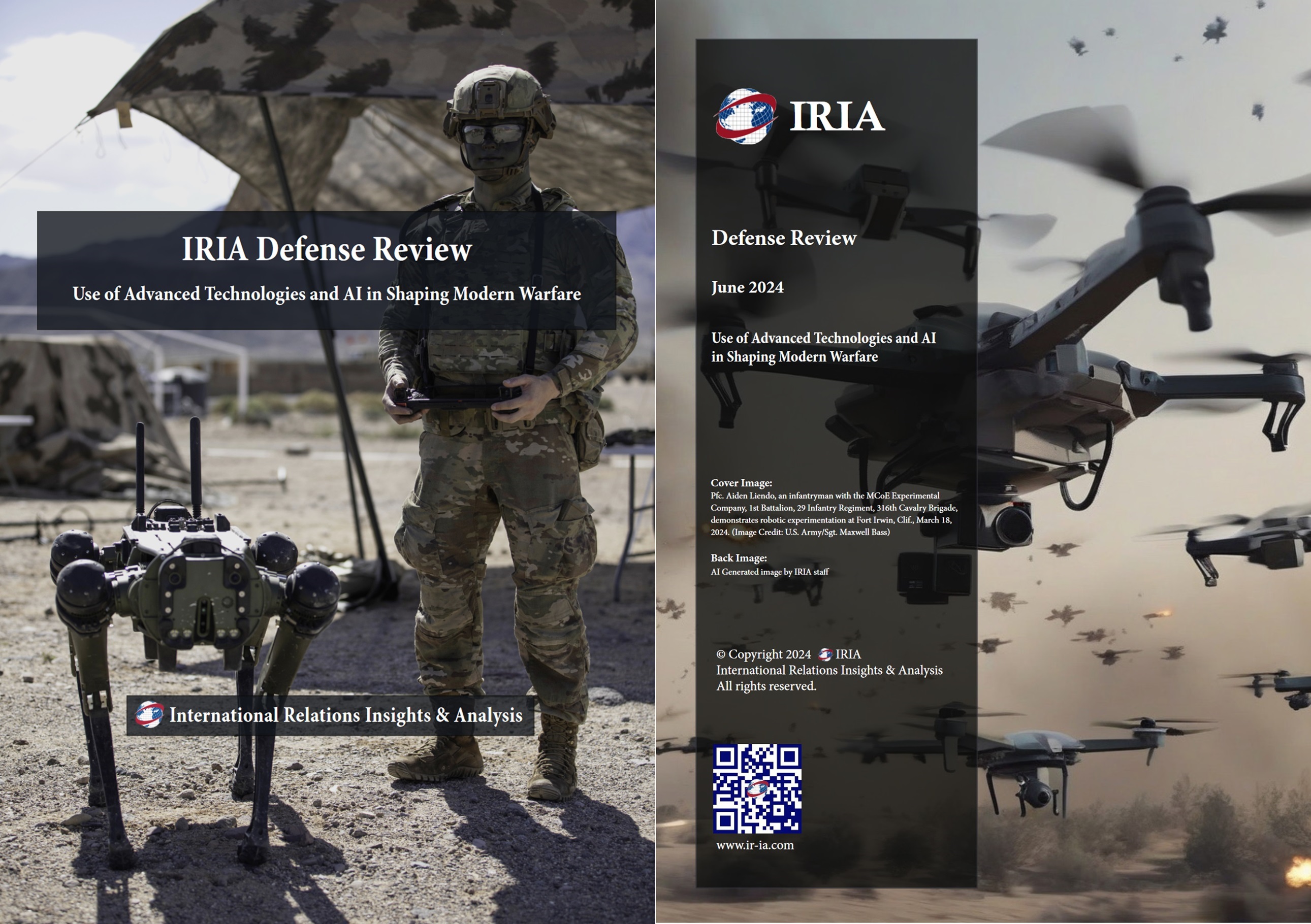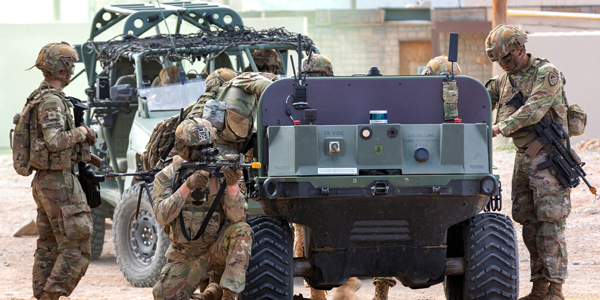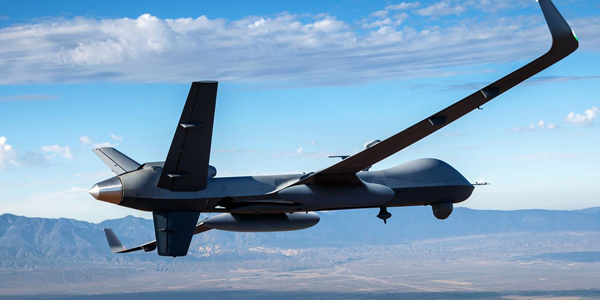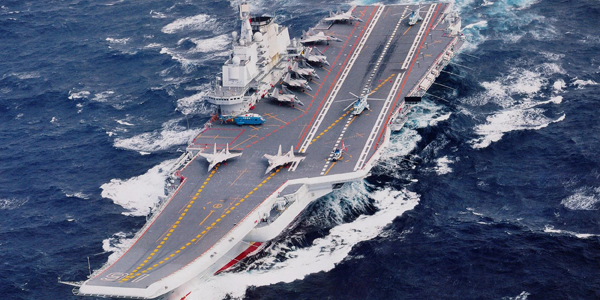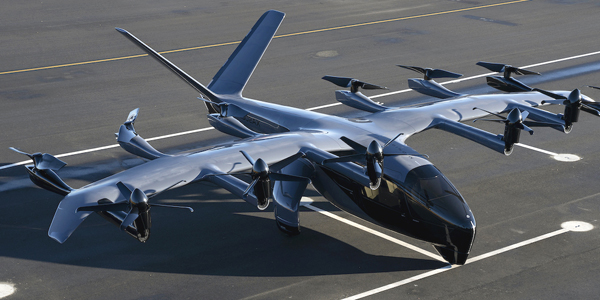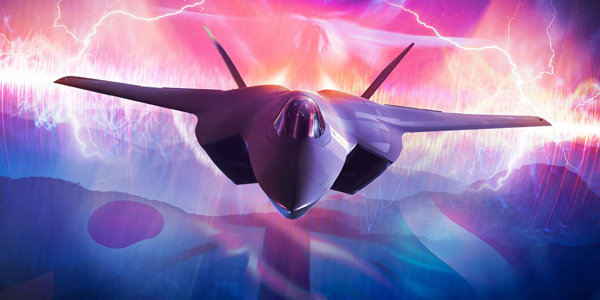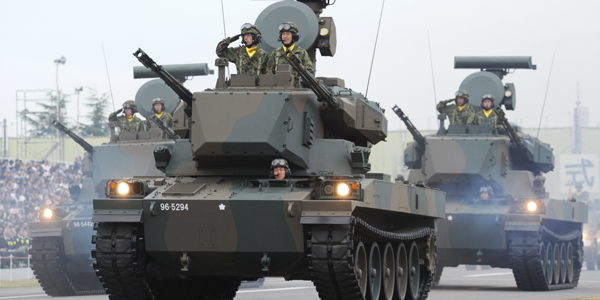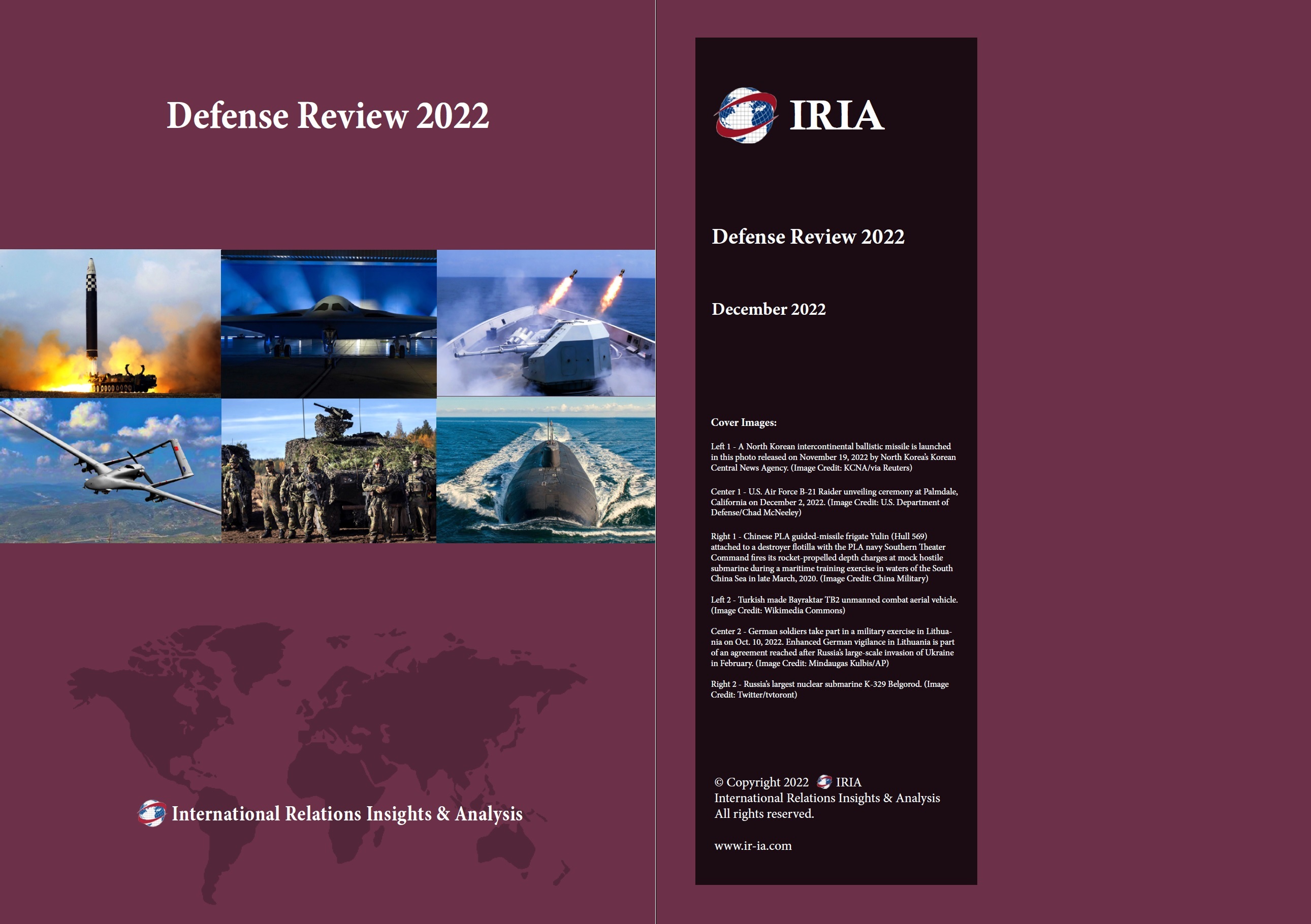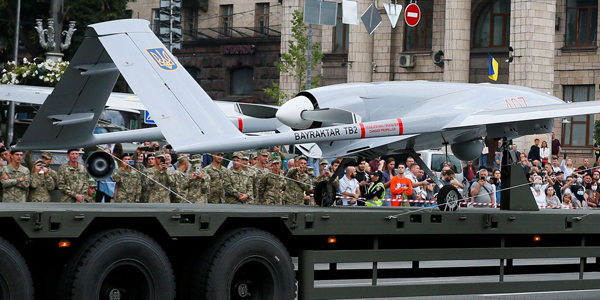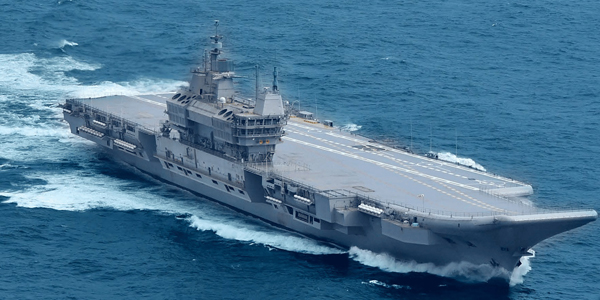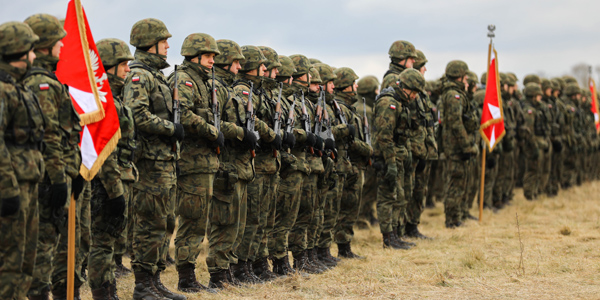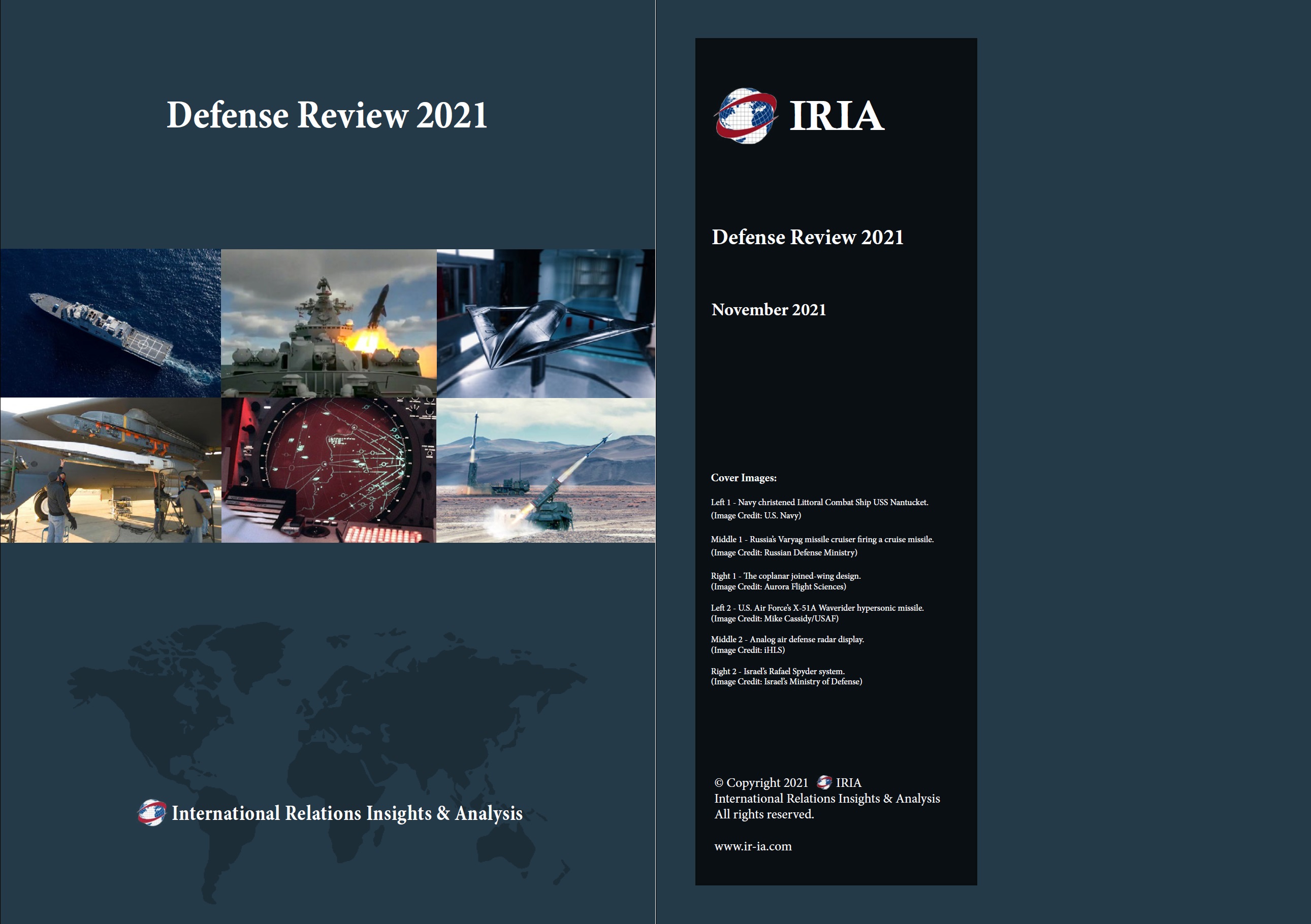IRIA Defense Review
Use of Advanced Technologies and AI in Shaping Modern Warfare
Overview
We live in a world constantly engulfed by the shadows of ongoing wars and conflicts. With two wars raging in Ukraine and Gaza and violent conflicts in Africa, there is more chaos, bloodshed, and insecurity. With increasing wars and conflicts, advancements in defense capabilities and military technology add layers of complexity to the evolving geopolitical landscapes.
This comprehensive IRIA Defense Review delves into a diverse array of critical topics shaping the contemporary defense landscape, ranging from cutting-edge innovations in aerospace technology to the complex dynamics of cyber warfare. With a focus on global trends and military modernization, this report aims to provide a nuanced understanding of the multifaceted dimensions of modern warfare, as well as defense and military strategies adopted by different countries.
Russia’s war of aggression in Ukraine, and the ongoing crisis in the Middle East have pushed the world powers to reevaluate defense strategy and prioritize defense investments while strengthening partnerships. This IRIA Defense Review highlights the rise of new technologies and their expanding roles within military contexts. Emerging technologies such as artificial intelligence (AI), cyber capabilities, and unmanned systems are altering the nature of warfare and defense strategies worldwide.
As nations become increasingly dependent on digital infrastructure, they are exposed to increased cyber threats. Cybersecurity has emerged as a cornerstone of modern national security policies to protect sensitive infrastructure and data and bolster overall security. This year’s report details the cybersecurity challenges and development of cyber defense capabilities, and its role in modern conflicts and underscores the importance of cybersecurity in contemporary conflict dynamics.
One of the key focuses of military technology in this year’s Defense Review is the integration of AI and its transformative potential including its role in decision-making, logistics, and autonomous systems. United States, United Kingdom, China, France, Russia, South Korea, and Israel are heavily investing in autonomous weapons systems. AI’s applications in military and defense span land, air, space, sea, and cyber domains, enhancing situational awareness, decision-making, and operational efficiency.
The integration of advanced robotic and autonomous weapon systems across military domains is also gaining momentum. The U.S. Army is actively integrating advanced robotic and autonomous systems into its units, spanning ground and aerial platforms, with promising experiments conducted at the operational level. The U.S. Army envisions a future where soldier formations are more efficient and lethal due to these advancements.
The Defense Review also focuses on the use of electric Vertical Takeoff and Landing (eVTOL) technology in enhancing military mobility, highlighting its potential impact on tactical operations and diverse applications in the military domain. Spearheaded by the Agility Prime program, the U.S. Air Force (USAF) has adopted the eVTOL technology and driving innovation by collaborating with the commercial industry to develop a new class of air mobility systems.
In the Indo-Pacific region, the world’s largest navy is actively seeking to bolster its maritime capabilities with advanced guided-missile destroyers, amphibious assault ships, and aircraft carriers. The chapter on China’s naval modernization delves into the country’s rapidly modernizing and diversifying navy, and the Chinese Navy’s aspiration to evolve into a world-class navy. Key areas of focus in the report include China’s aircraft carriers, underwater drones, unmanned systems, submarines, destroyers, frigates, and corvettes, illustrating the breadth and depth of China’s naval modernization efforts.
As naval prowess grows worldwide, so does the global contest for supremacy in advanced fighter aircraft. Several countries and their aerospace firms are deeply involved in researching and developing sixth-generation fighter jets. These next-gen aircraft incorporate features like stealth technology, advanced avionics, high-performance engines, and modern weaponry for air-to-air and air-to-surface combat. The Defense Review dedicates a chapter and delves into several prominent sixth-generation fighter jet projects, including the United States NGAD and F/A-XX Program, the Mitsubishi F-X Jet, and the BAE Tempest, examining their advancements and strategic implications in shaping future aerial warfare.
In the context of rapid technological advancements, drone technology has been significant in revolutionizing modern warfare. Recent conflicts have showcased the transformative impact of drones on the battlefield, from compact palm-sized drones to larger models, enabling militaries to conduct surveillance, air raids, and attacks remotely. The Defense Review focuses on the evolving role of unmanned aerial vehicles and their applications in reconnaissance, surveillance, and targeted strikes. It also explores the ten most advanced and lethal combat drones utilized by various militaries worldwide, highlighting their capabilities and strategic significance in contemporary warfare.
Growing tensions in the Pacific and North Korea’s barrage of new missile tests have remained a significant cause of concern since 2022. In this context, Japan’s ambitious military modernization efforts have been noteworthy. This report provides an analysis of Japan’s expansion of military power, marked by a substantial increase in defense spending. The report sheds light on Japan’s evolving defense capabilities, objectives, and strategies in land, air, sea, and cyber domains. The surge in defense investment underscores Japan’s commitment to bolstering its deterrent capabilities and readiness for potential conflicts.
As nations navigate the evolving threat landscape and strive to maintain strategic advantage, this report explores the multifaceted landscape of contemporary defense and technological innovation and seeks to provide policymakers, defense analysts, and stakeholders with valuable insights into the complex dynamics shaping modern warfare and defense strategies in the 21st century.
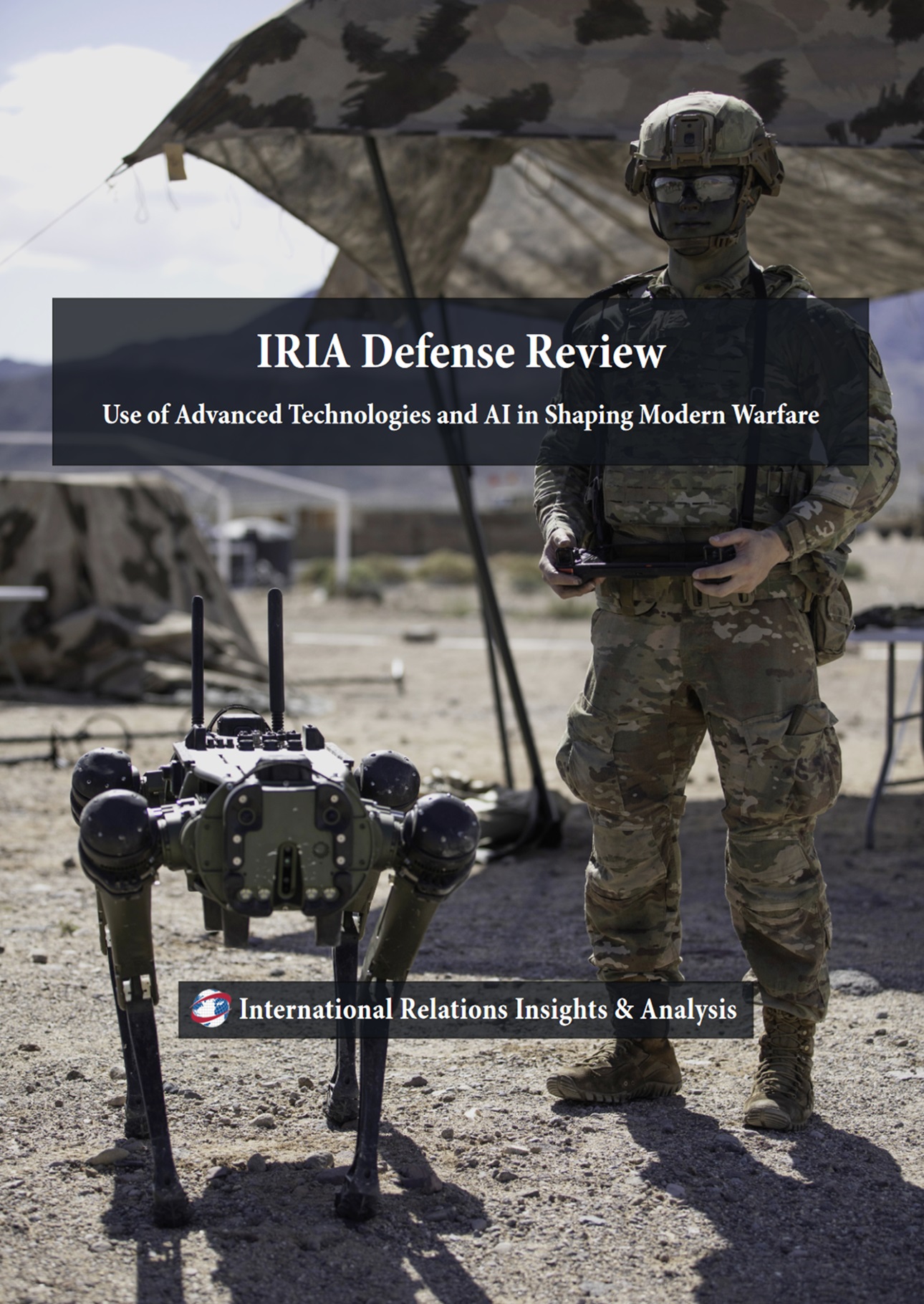
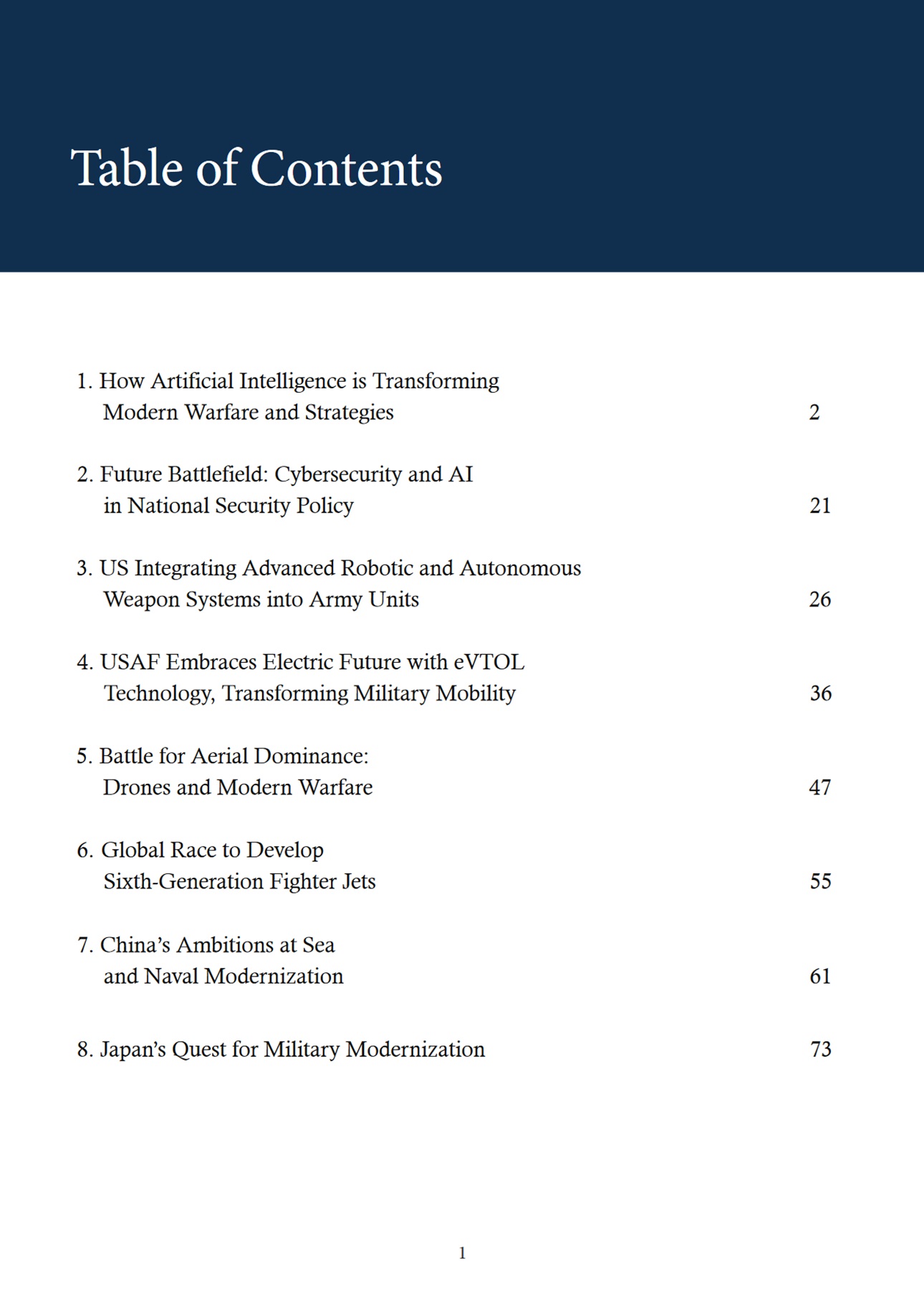
IRIA Defense Review 2022
Overview
The year 2022 can be defined as a turning point for global security and the geopolitical landscape. It was a significant year for the global defense industry as 2022 witnessed an immense increase in demand for weapons largely due to a global wave of military modernization. New technological advances were achieved while older technologies were upgraded. From next-generation bombers and aircraft to basic handheld rocket launchers, the IRIA Defense Review 2022 provides a concise and comprehensive overview of the weapon technologies of 2022 and their use in modern warfare.
The first quarter of the year 2022 saw the beginning of Russia’s war on Ukraine and changed the course for the rest of the year. Although the actual military campaign started only in February 2022, the military buildup had been forging grounds since late 2021. Updates related to the Russia-Ukraine war have been making headlines to date as it seems far from over. The Russia-Ukraine war is a significant development because it is one of the largest military conflicts in Europe since World War II. This year’s edition of Defense Review extensively focuses on events related to the Russia-Ukraine war.
NATO claims not to be an actor in the Russia-Ukraine war, however, members of the NATO alliance are most vulnerable to a security threat if the war spreads beyond Ukrainian borders. In the wake of this threat, NATO and its allies have revitalized their arsenal and defense capabilities. NATO has conducted a large number of military exercises while the alliance members are ramping up efforts to deter a possible war in Europe. All this has led to an immense increase in the demand for weapons most prominently, fighter jets and air defense systems. U.S.-made F-35 Lightning II fighter jets and Korean-made FA-50 Golden Eagle saw a substantial increase in demand while U.S.-made HIMARS became the most extensively used air defense system against Russian aerial attacks. This year’s Defense Review puts a special emphasis on these and other defensive weapons technologies that gained prominence as a result of the Russia-Ukraine war.
The year 2022 also saw a substantial improvement in the drone industry as global militaries are shifting towards cheaper yet more reliable drones to carry out surveillance and reconnaissance as well as light combat missions. Turkey became the frontrunner in the global drone industry with its military drones gaining significant fame during the Russia-Ukraine war. On the other hand, Iranian drones also gained a fair share of publicity after being used by the Russian military for carrying out attacks in Ukraine. Defense Review 2022 gives particular attention to the role of drones in modern warfare and its future implications.
As Europe was facing a threat of aggression, a lot happened in the Indo-Pacific region as well. The year 2022 saw an unprecedented increase in weapons testing and missile launches by North Korea. From the start of 2022 until the end, North Korean leadership kept its regional rivals on the edge of their seats by carrying out consecutive missile tests, including one of the largest Intercontinental Ballistic Missile (ICBM) tests to date.
Not too far away from North Korea, tensions were rising between China and the U.S. on issues related to Taiwan. The ongoing tension reached its climax in August 2022 when an unannounced trip by the U.S. House Speaker to the self-governed island angered Beijing to a point that China’s People’s Liberation Army (PLA) conducted the largest-ever live-fire drills around Taiwan. The IRIA Defense Review 2022 provides an analysis of the weapons and military capabilities that China showed off during the live-fire drills.
Militaries all around the world advanced their ambitions of modernization. Several countries added new fighter jets, naval ships, and attack missiles to their fleets while many others unveiled similar plans for the future. The most significant additions are the U.S. Air Force’s B-21 Bomber Jet, Indian Navy’s INS Vikrant Aircraft Carrier, and Russian Navy’s Oscar II-class Belgorod K-329 Submarine. These cutting-edge upgrades to the largest military arsenals of the world indicate the ambitions of the states and the continually evolving global and regional security landscape.
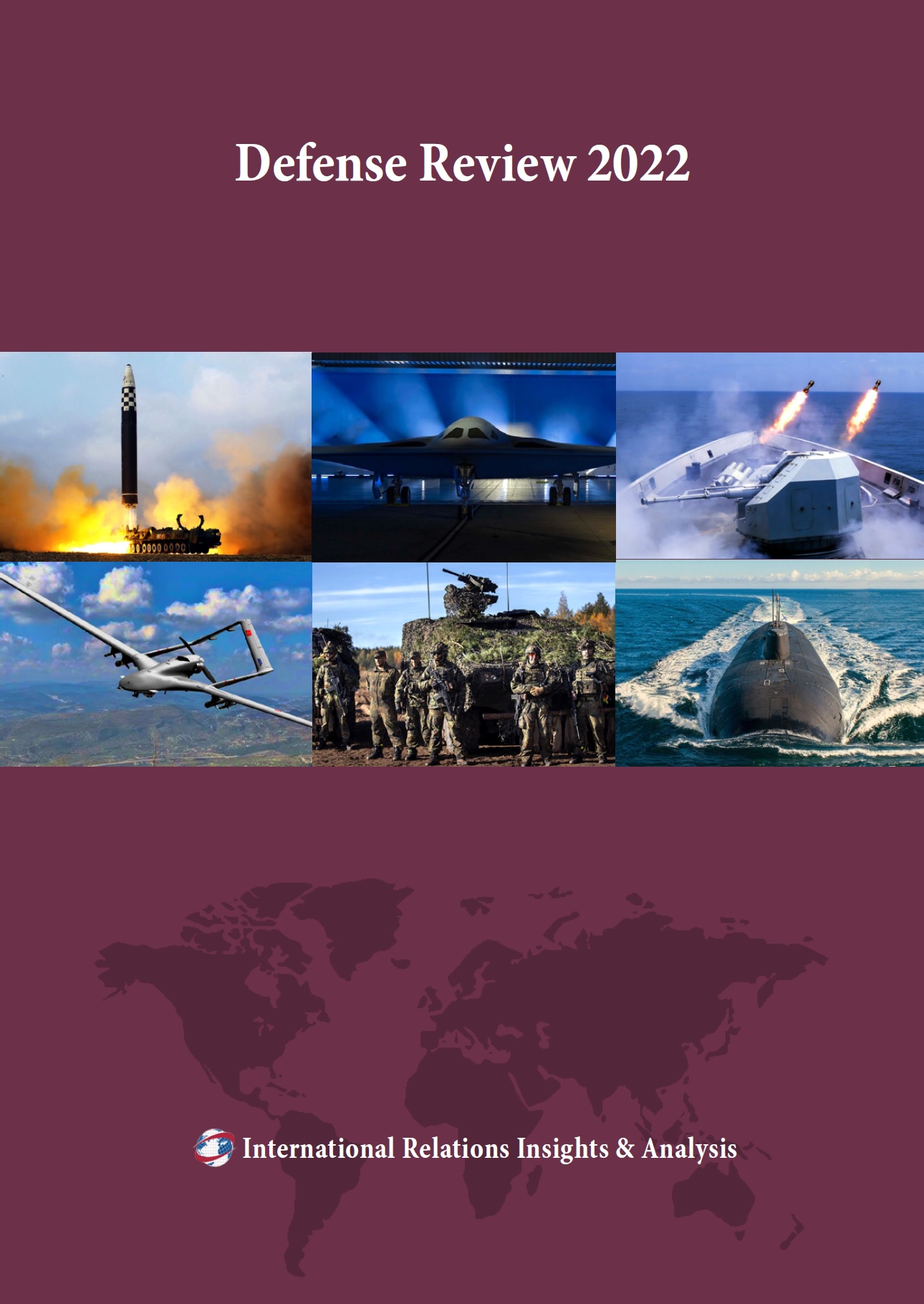
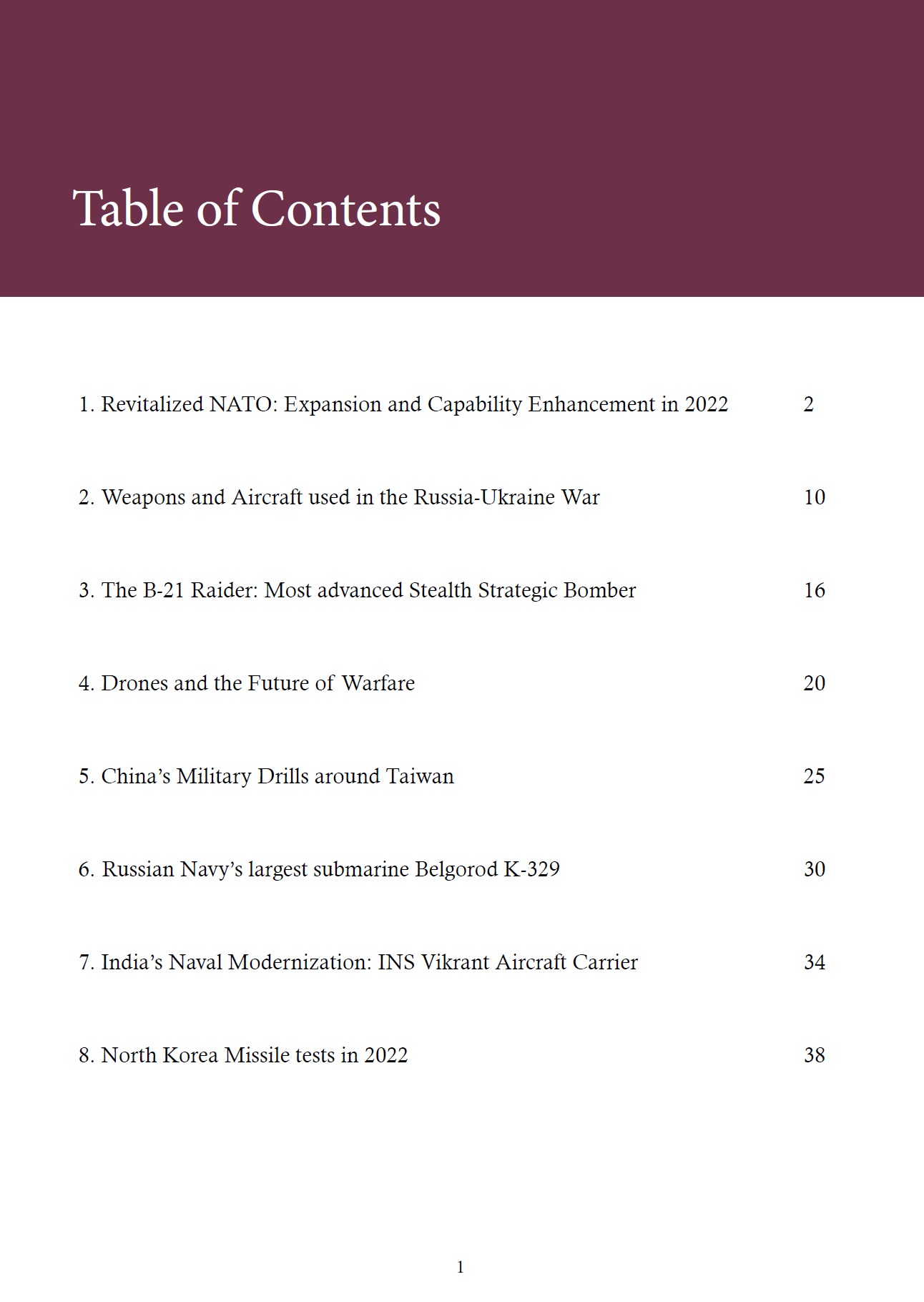
IRIA Defense Review 2021
Overview
The evolving geopolitical situation has intensified the need for procurement and development of advanced weapons technology and led many countries to enhance and upgrade their arsenals. The year 2021 witnessed significant progress on this front with many countries unveiling their weapons upgrade plans and aircraft, warships, and missile procurement programs. These ameliorations are not only confined to the conventional domains such as naval technology, air defense systems, and land-based weapons but also explore new and unconventional domains such as space weapons and hypersonic missile technologies.
This edition of IRIA Defense Review focuses on the latest advancements in all domains of weapons technologies. In this edition, several ongoing and future military programs from around the world have been analyzed concisely to provide readers with relevant information on weapon development projects.
The United States’ progress in the X-Plane project, LongShot UAV program, and Hypersonic weapons technology demonstrates that the U.S. military has paced its efforts to develop and procure the latest aerial defense technologies. While Russia is focusing on enhancing its naval capabilities with the development of its latest 23900 Amphibious Assault Ships Project. Russia is also increasingly focused on hypersonic weapons programs and has conducted several tests of submarine-launched and ship-launched hypersonic missiles.
China, after making significant progress on the naval front in the past few years, has shifted its focus on the advancement of its aerial warfare capabilities. China’s new 20-series fighter jets and drones are set to become its most important air defense and assault assets. At present, China is also leading the hypersonic arms race with the capabilities of deploying operational missiles and advancing its ongoing missile development programs.
At the same time, Turkey is determined to become one of the biggest producers and exporters of drone and UAV technology. In South Asia, India and Pakistan are making significant progress in upgrading their arsenals through indigenously developed weapons as well as acquiring new technologies from their respective allies, the U.S. and China. In East Asia, Japan has acquired the latest AEGIS destroyer and is set to increase its naval capabilities amid the rising tensions in the Indo-Pacific region. While Iran’s Alborz and Borhan air defense systems and North Korea’s Hwagsong-8 hypersonic missiles have been the most significant advancements by the countries despite heavy sanctions.
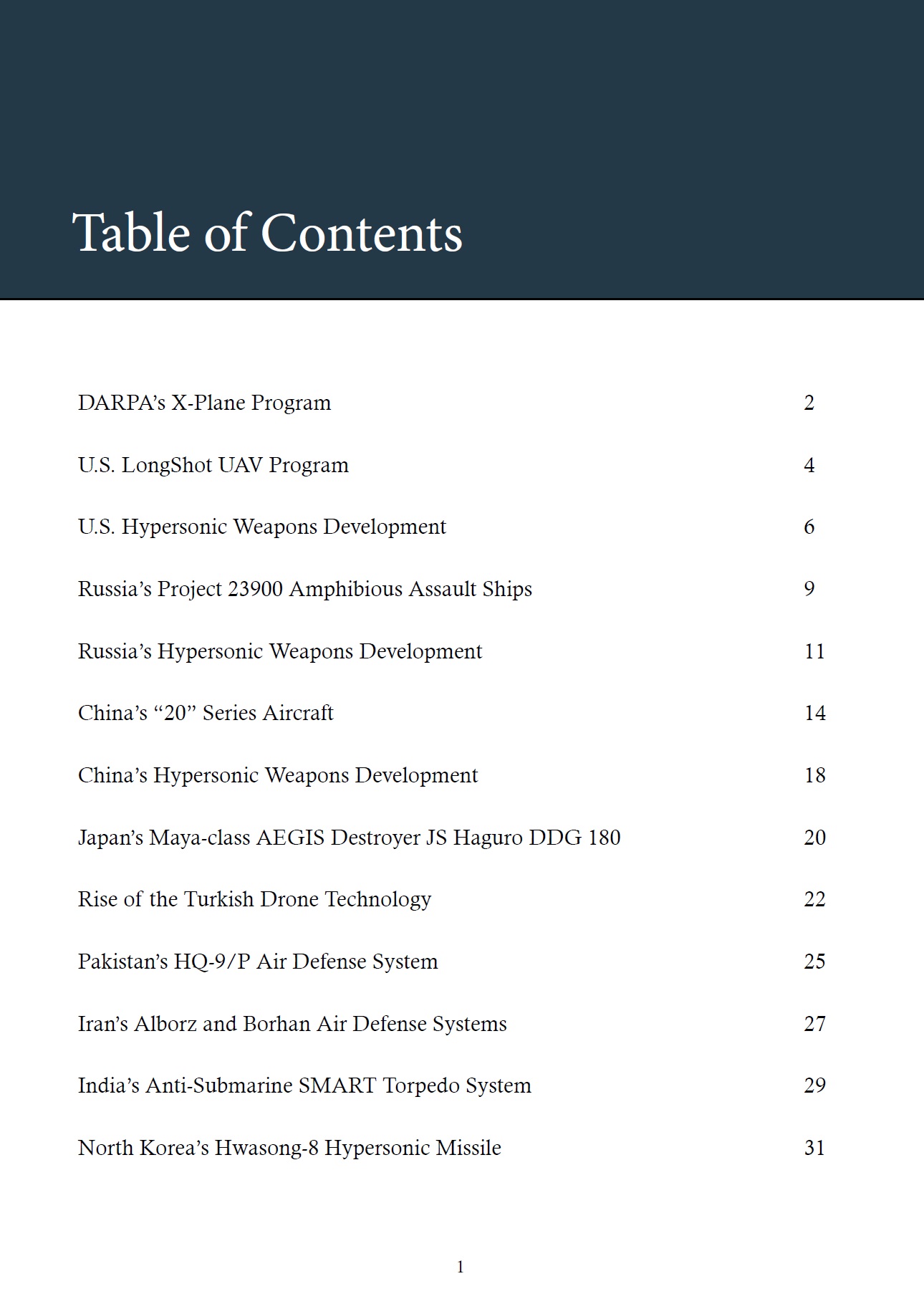
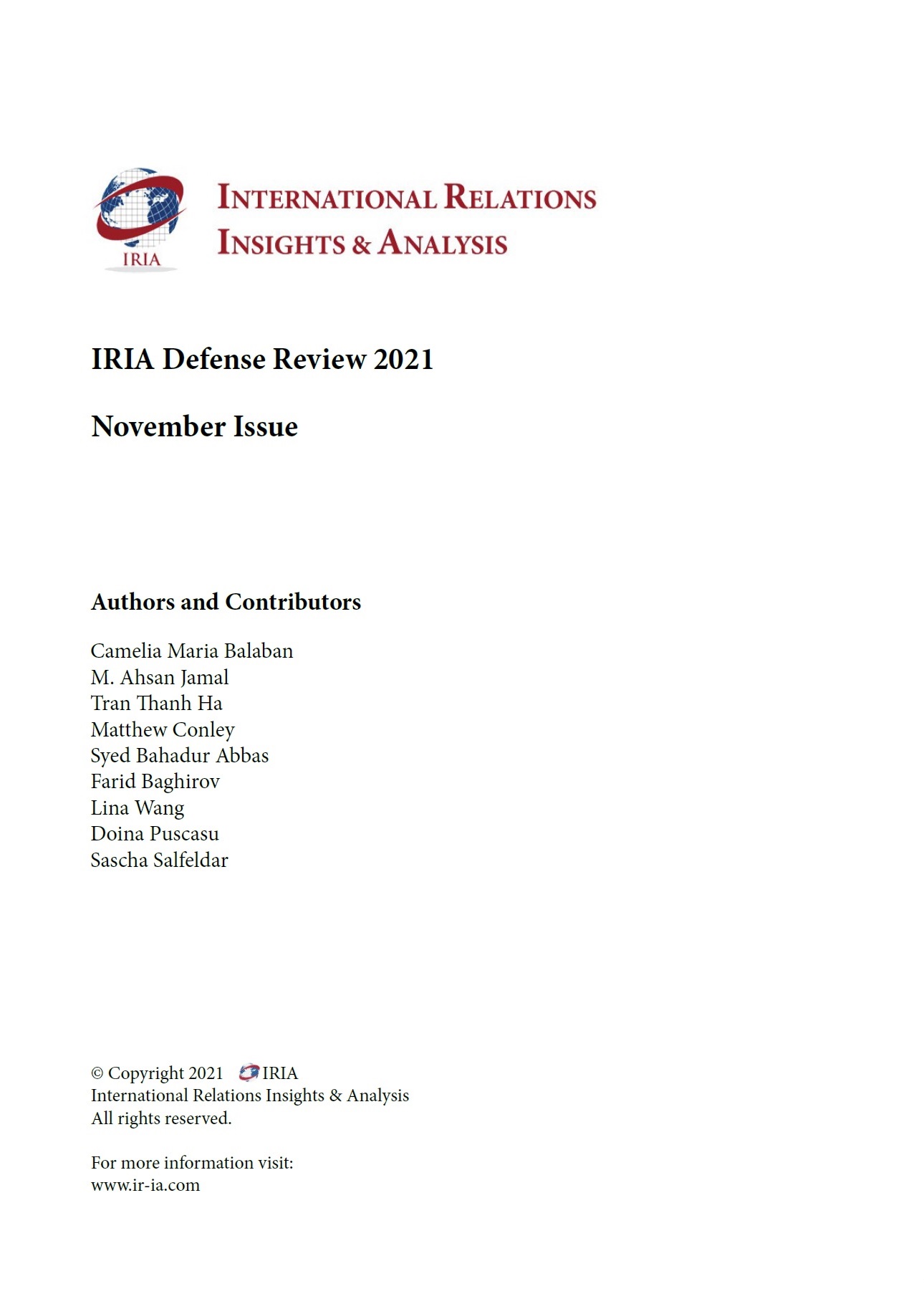
Related Reports and Articles
Regions
Issues

















